CONTENTS
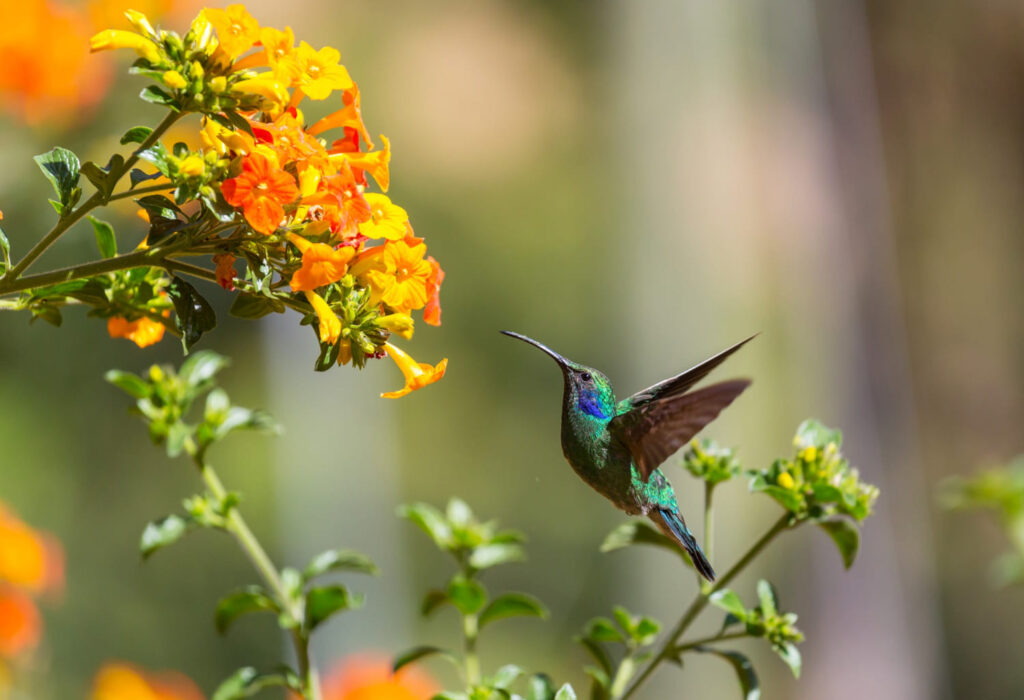
How to Attract Hummingbirds: Expert Tips for Your Garden
Hummingbirds, those vibrant, buzzing, and nimble little creatures, can bring life, color, and magic to any garden. But how do you turn your garden into a hummingbird hotspot? It’s not as difficult as you might think!
Ahead, we’ll be sharing some simple yet effective tips and tricks to make your garden irresistibly attractive to these feathered visitors. Whether you’re an avid bird watcher or merely a nature enthusiast looking to add a touch of charm to your outdoor space, stick around. Your garden is about to become the hottest hummingbird hangout in town!
How to Attract Hummingbirds to Your Yard
Looking to transform your yard into a hummingbird paradise? Read through these tips to make your space a hummingbird haven!
Plant their favorite flower
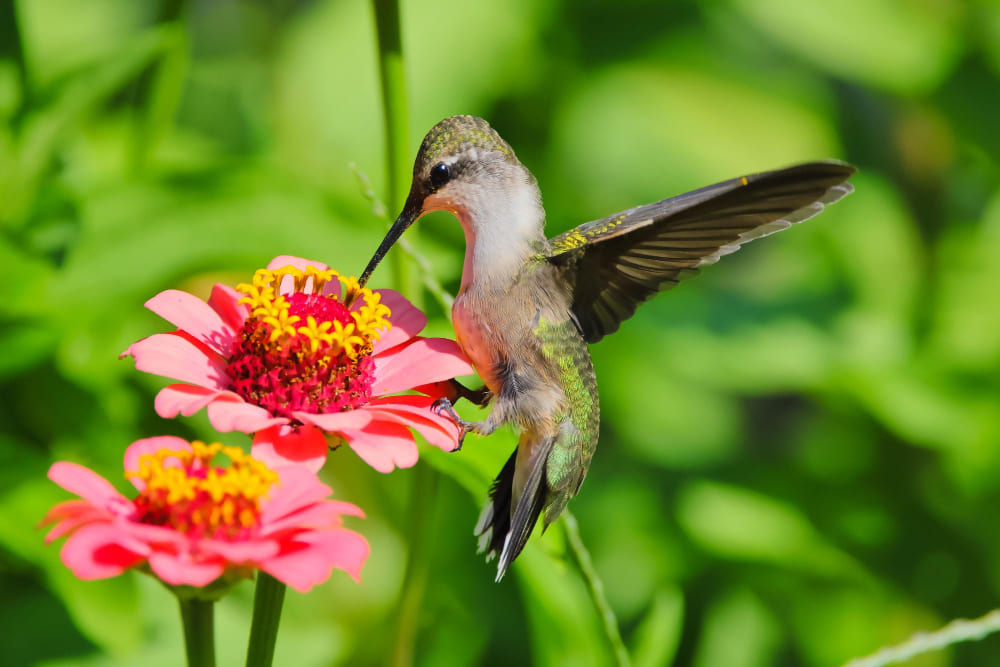
Luring hummingbirds in your yard can be as simple as growing their favorite flowers. These birds are especially attracted to vibrant, tube-shaped blossoms full of nectar. Some of their preferred flowers include bee balm, salvia, hibiscus, and honeysuckle.
Plant these in areas that receive plenty of sunlight since hummingbirds are fond of warm places. On top of that, consider grouping the same types of flowers together to make them more noticeable and attractive to these birds.
Choose the right feeder’s location
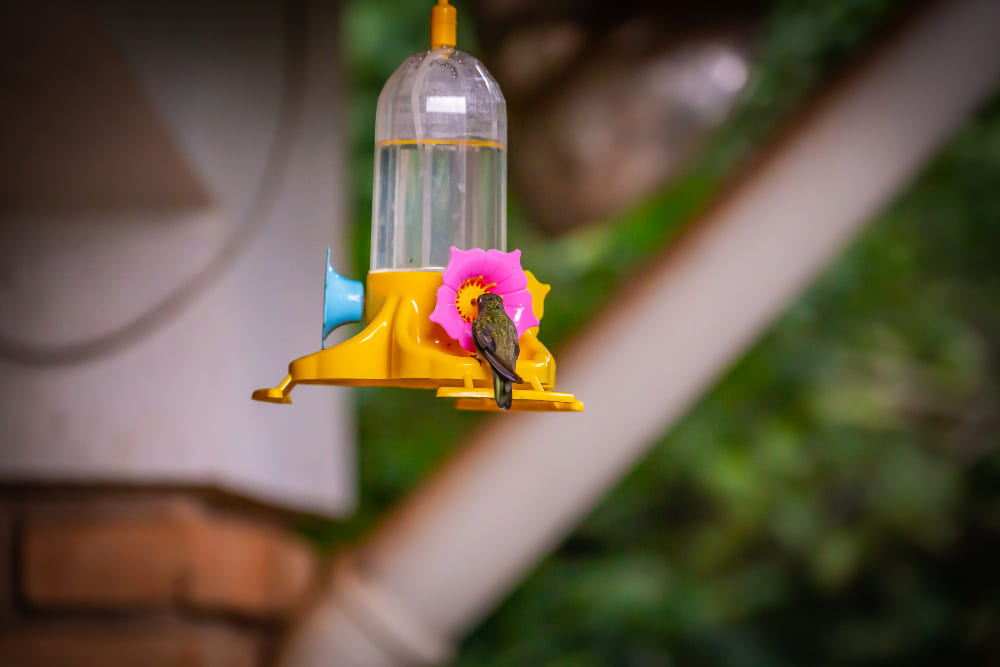
Opt for a calm and secure area not prone to heavy foot traffic, ensuring the birds feel safe. Placing the feeder near plants or flowers rich in nectar can also enhance its appeal to hummingbirds.
Additionally, position it in a shaded location to prevent the nectar from deteriorating in the sun quickly. If you want to go extra, ensure the feeder is visible from your window for your viewing pleasure. Regular maintenance, including cleaning and refilling, will keep the feeder inviting to these delightful birds.
Set up a hummingbird fountain
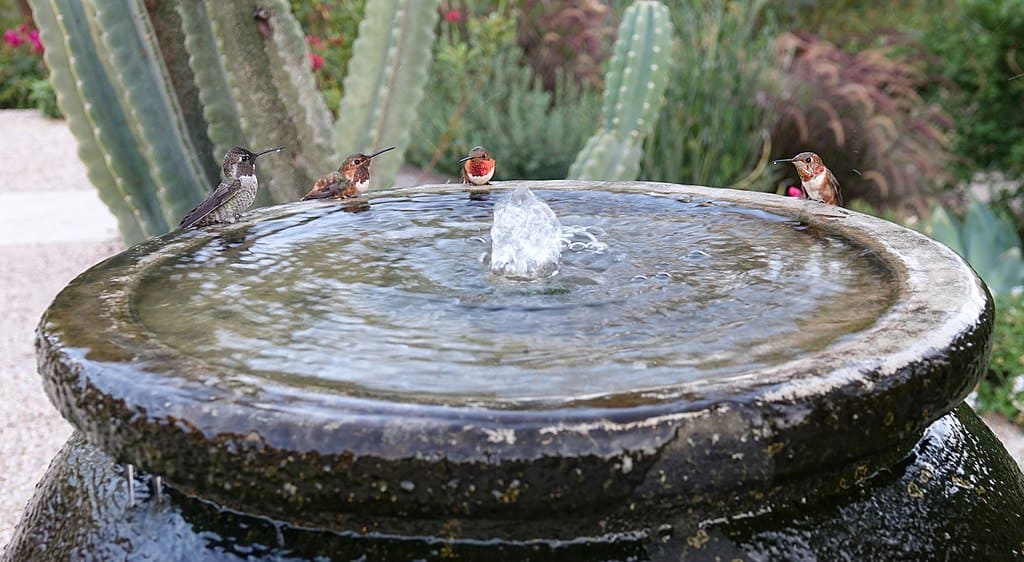
Attracting hummingbirds can be effectively done by setting up a hummingbird fountain. Hummingbirds are fond of shallow water, so ensure the fountain isn’t too deep. A fountain with features that create movement in the water, such as drips or mist, can attract these birds as they are drawn to the sight and sound of moving water. To spice it up, you can add small rocks or pebbles so that the birds have a perch spot.
Provide fresh water
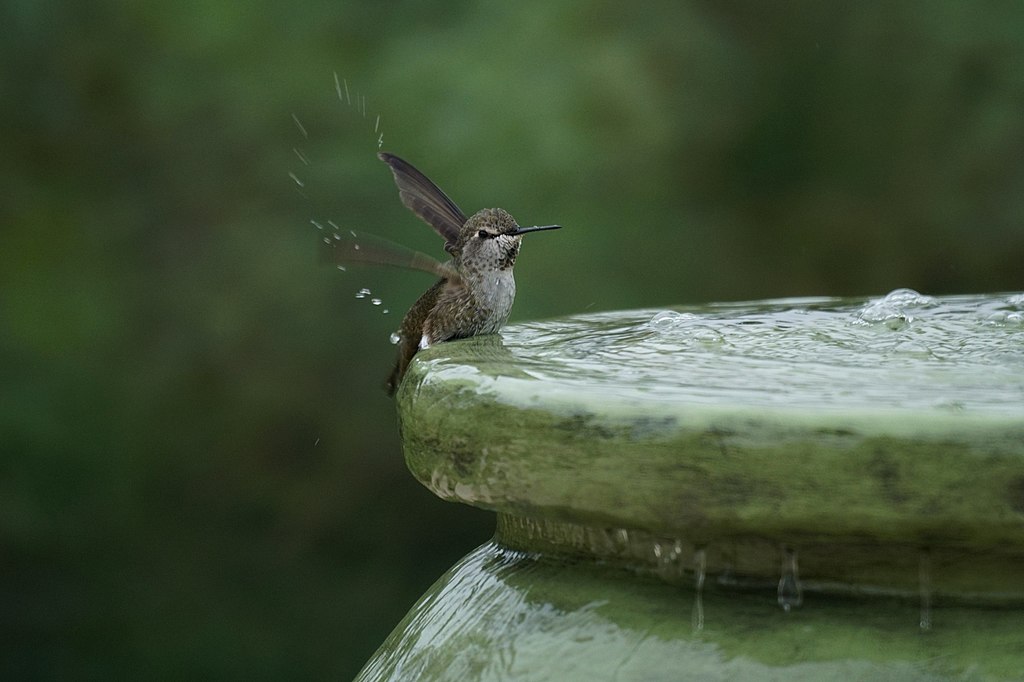
It’s crucial to provide fresh water consistently in the water fountain you’ve set up in an appropriate location. Hummingbirds, like all living creatures, need fresh water for survival. They use it for drinking to stay hydrated and for bathing to keep their feathers clean, which is essential for their flight and temperature regulation. That’s why it’s vital to regularly replace the water and maintain cleanliness to avoid bacteria or algae formation.
Place red-colored objects around the feeder
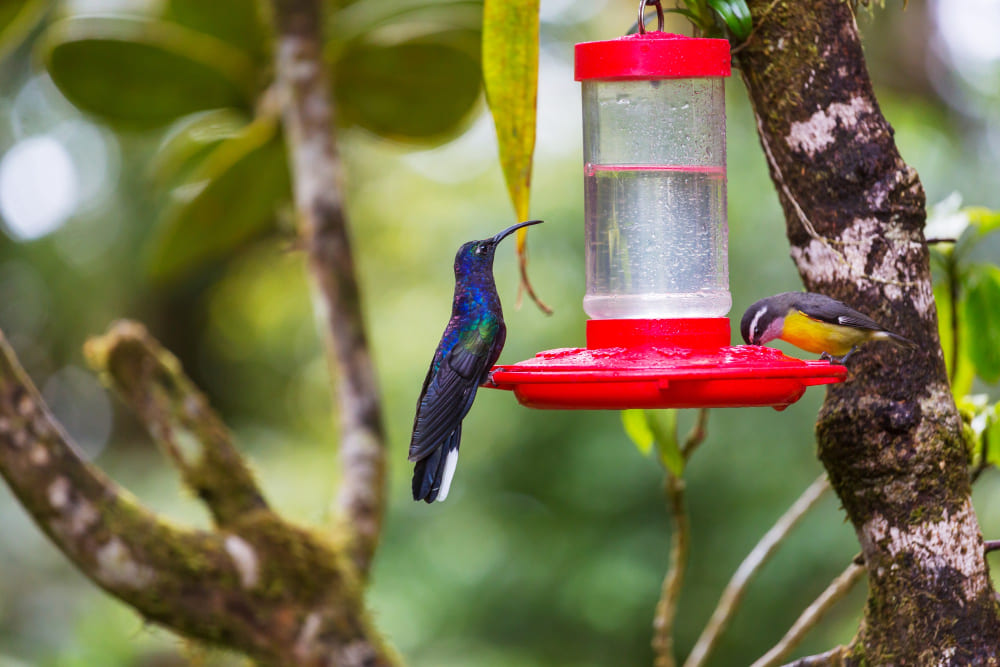
Hummingbirds have a strong affinity towards the color red, often linking it with flowers rich in nectar. To entice these birds to your feeder, consider incorporating red elements around it. These could be anything from red flags, ribbons, or even rocks painted in red. This bright color is likely to attract the hummingbirds from afar, prompting them to explore the area for food, thereby finding your feeder.
However, ensuring these red objects are safe and not harmful to the birds is crucial. While red can initially draw them in, maintaining a supply of fresh nectar in the feeder will keep them coming back.
Put out fruit
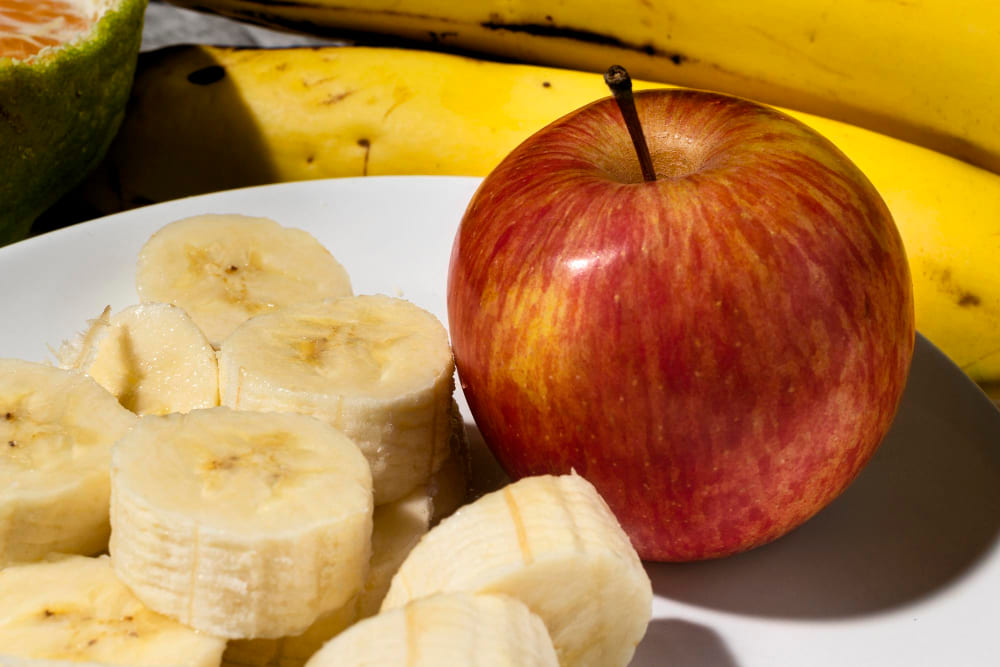
Hummingbirds are drawn not only to nectar and fresh water but also to certain types of fruits, especially those that lure small insects, a vital part of their diet.
Setting out ripe fruits like bananas, apples, or melons near your hummingbird feeder can attract these birds to your garden. The fruit acts dual roles: it draws small insects that hummingbirds consume for protein, and its sweet aroma may also appeal to the birds themselves. However, it’s important to frequently change the fruit to prevent attracting unwanted pests or causing any health issues for the birds.
Don’t put honey or other sweeteners in nectar
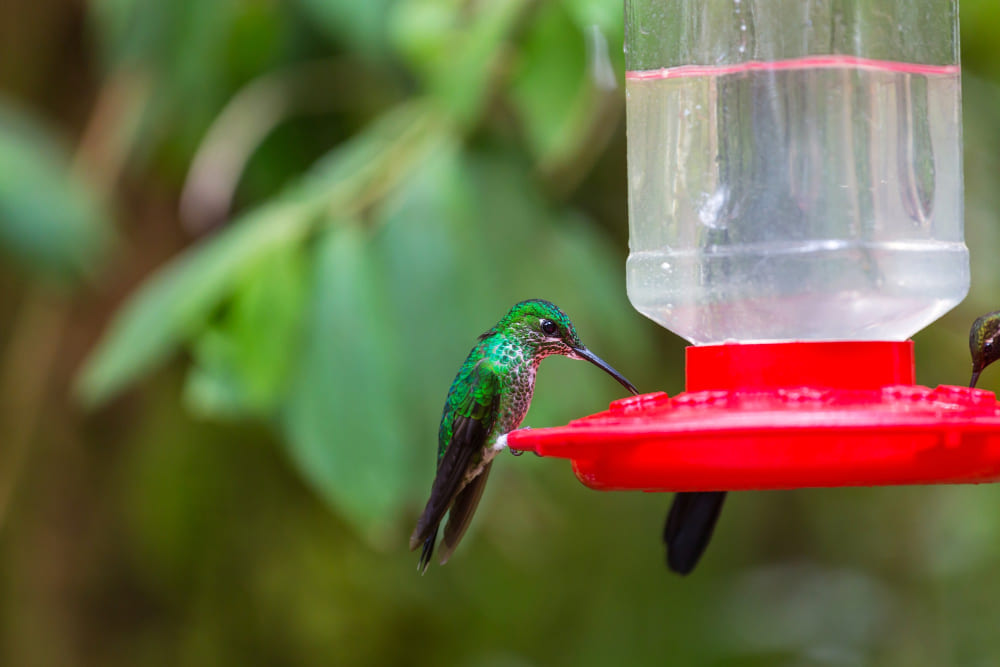
Adding honey or other sweeteners to nectar in an attempt to attract hummingbirds is not recommended. When mixed with water, honey can ferment and create harmful fungi that can negatively affect the health of hummingbirds.
Moreover, many artificial sweeteners lack the essential nutrients that hummingbirds require. Thus, it’s best to prepare nectar using just plain white sugar and water in feeding hummingbirds; it closely mimics the natural flower nectar that hummingbirds extract from flowers.
Frequently Asked Questions
When do hummingbirds come to feeders?
Hummingbirds typically start visiting nectar feeders and flowering plants from March through May during their migration period. The peak time for hummingbird activity at feeders is in August and September. However, they can be spotted feeding at any time, especially early in the morning or late in the afternoon. They also have remarkable memories and will return to the same feeder yearly.
How often should hummingbird feeders be cleaned?
Hummingbird feeders should be cleaned every three to five days or more often in hot weather to prevent mold and fungus growth.
How long does it take for a hummingbird to find a feeder?
There’s no set timeline, but typically, a hummingbird may find a new bird feeder within a few days to a couple of weeks.
Conclusion
Attracting hummingbirds to your garden requires the right blend of a nectar-rich water fountain, vibrant red objects, and serene freshwater features; your garden can become a hummingbird haven in no time. Remember, it’s not just about luring these flying jewels but also providing a safe, nourishing environment where they feel at home—you can even provide hummingbird food!
So, roll up your sleeves and transform your house garden into a hummingbird paradise. These delightful creatures’ mesmerizing flight and iridescent colors will surely fill your days with joy and your heart with wonder. Happy gardening!

